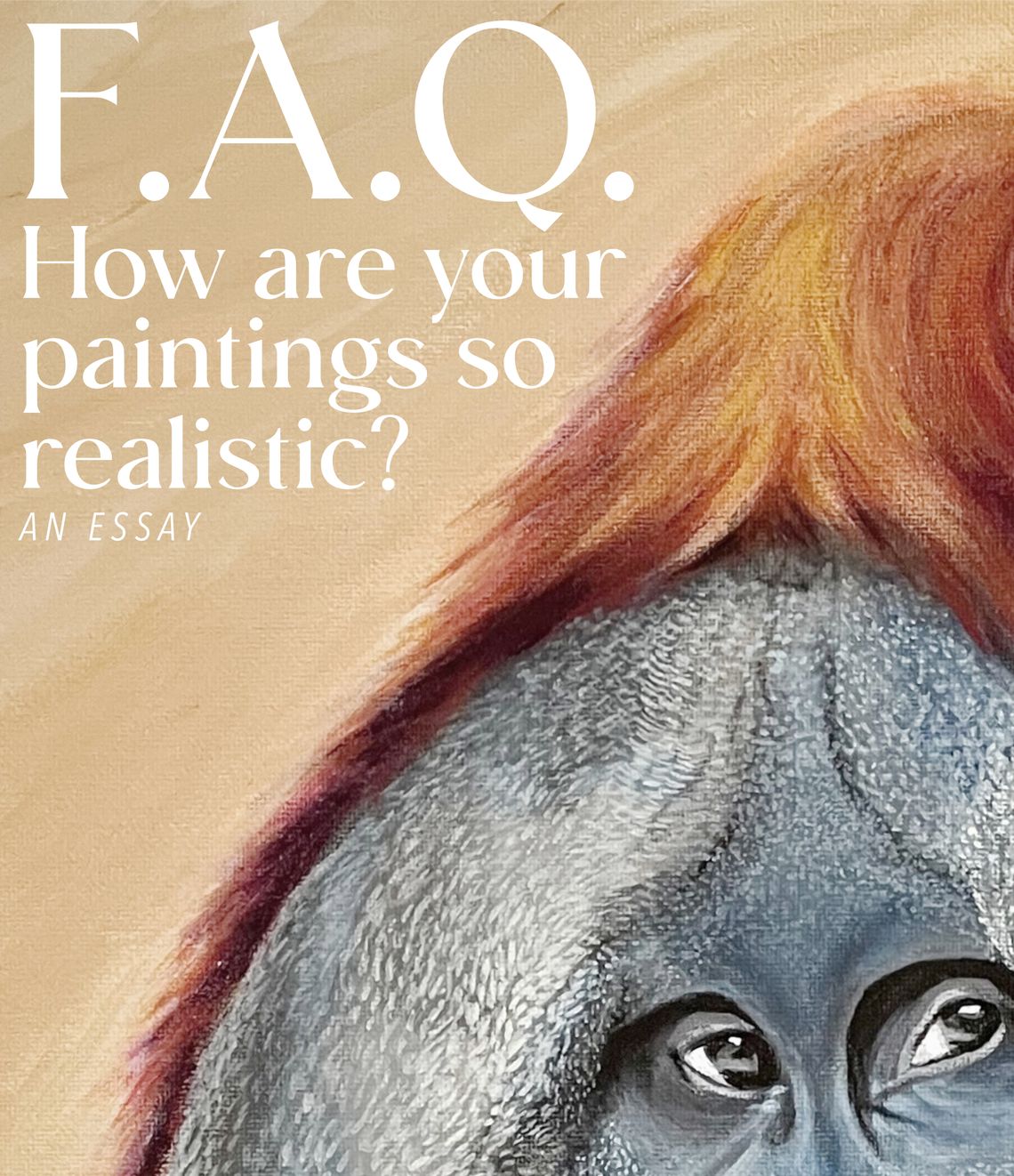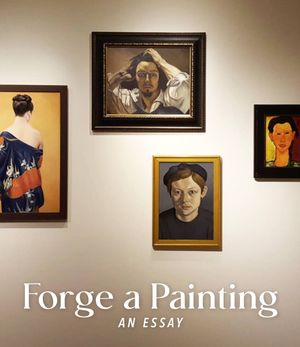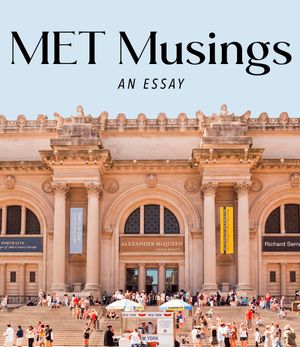
FAQ: How are your paintings so realistic?
It's the afternoon, the studio is flooded with warm golden light. My portrait of Casper, the Orangutan, is sitting on the easel next to my window. I take in the fresh breeze as lo-fi beats softly fill the space. I stare into Casper's eyes, mixing some paint to match his skin. Being mindful of the sunlight's warm tones and knowing the paint will dry a bit darker, I slowly mix in white paint until it's just a shade lighter. I grab my smallest brush (it's lightweight with a thin smooth stem, it feels nice), dip it in some water, and lightly glide it over the towel. I roll the brush around in the paint, coating the bristles with just the right amount. As I carefully place each stroke onto his skin, the paint slowly falls off the brush. This is where I live.
This trance could last hours but it only feels like 5 minutes. There's no concept of time. Whether I'm listening to music or thinking about life, the flow state of painting feels soothing and therapeutic. With each brush stroke, Casper and I talk to each other in some telepathic kind of way. Captivated by the expression of who I'm painting, I study their face and apply it to the canvas. There’s an active exchange - the nose is a little too far from the mouth, the curve of his cheek needs to round out, his eye color needs a bit more warmth. The painting tells me what it needs and I do it, over and over, until it's done.

I'll admit, I'm a perfectionist.
As a perfectionist, I hold myself and my work to the highest standard possible because I want the output to be of the highest quality possible. Through comparing myself and my work to those of inspirational artists and architects, I learn what it looks like to be the best and work my ass off until I get there.
I benefit greatly in my artwork by striving for perfection, but get horribly burned in the workplace and in other areas of my life. After reflecting on the positive and negative effects of perfectionism, I believe I can thrive as a functioning perfectionist.
I'm well aware of how much society looks down upon perfectionism. Most people believe that striving towards perfectionism is an impossible feat and is not worth trying. Some say perfection is the enemy of good and creativity, the strongest form of self-abuse, or a delusion that can take away from a fulfilled and happy life. The status quo is to get something good enough to get it out the door. Just ship it. Move quickly, improve quickly. How is it possible to improve if you’re not taking the time to do in-depth research, reflecting on what you learned, and doing multiple cycles of producing, getting feedback (internally and externally), and re-iterating?
The dark side of perfectionism.
While I do believe this “ship it” mentality is valuable for less important activities, like chores, I still struggle with perfecting details that don’t actually matter. For example, when cleaning the bathroom I’m not satisfied until every touchable surface is fully wiped down and every visible speck of dust is removed, every single tile grout line in the shower is scrubbed with a tiny tooth brush until the color is restored (its white, of course), and all of the mirrors and chrome fixtures are reflective without any streaks.
When I worked as an Architect, I wanted my drawings to be perfect. I was satisfied once a drawing was complete to my high visual standards. I could spend up to 3 hours on one section detail drawing through a kitchen sink, adjusting the line thicknesses, aligning and equally spacing each justified-left text bubble, adjusting the scale of each hatch pattern so there was a visual balance, etc. Another co-worker might only spend 15 minutes on this same task and move onto something else.
My drawings would often fall short of perfection due to external time constraints. Meeting tight deadlines was always difficult for me, compared to my colleagues who could just “ship it.” There were frequent changes to the project due to budget constraints or design preference, which contributed to a constant stream of drawing changes and what felt like never-ending work.
It was very upsetting for me to constantly change my perfect drawings. So much of my energy and time (mostly unpaid overtime) was spent not only on the drawings themselves, but researching the building code and coordinating with the engineers and interior designers. Every shower drain was located so it wouldn’t be below the ceiling in a living room that faced Central Park. Every grab bar next to a toilet was thoughtfully placed on the wall within the tile grid and within the height range required by the building code. Every door squeezed within a questionably tight hallway was checked against the surrounding baseboard thickness and confirmed that the door can actually open.
Whenever a change was needed, my chest would tighten as a whole rush of emotions flooded through me. I felt anger (“WTF?!”), then fear (“How am I going to get this done on top of everything else?!”). Finally, I would blame myself for not predicting this would happen, because it always does. I was constantly disappointed in myself and this anguish slowly ate away at my self-image.
After 8 years of torturing myself, I quit my job to take a career break. And because the drawings belonged to the company, I had to leave them behind. My heart shattered knowing that once they served their purpose as the roadmap to build a building, they would be locked away in the archives and I, nor anyone else, would never see them again.
Finding an outlet for perfectionism.
Perfecting my art has been nothing but purely rewarding. I draw intricate mandalas and paint portraits of people and animals. Painting is a medium I started recently, and I only completed 3 portraits (featured on my site) and have one in progress. Some of my art was made as gifts for others. Parting with my art is not as difficult as parting with my architectural drawings because I know that the owner will display and enjoy them as they are, and appreciate the time and energy I spent creating them. There are only tentative deadlines that I create to control my own pace. Once a painting is finished, it is finished and I move onto the next one. Best of all, I am the author of my own work.
Since taking a career break, I realized it's not worth applying my perfectionism everywhere. It is only worth perfecting work that brings me joy and can call my own. Knowing when to turn on the perfectionism switch is something I will work on in all areas of my life and in the next phase of my career.
Special thanks to Sandra Yvonne, Steven Foster, Arman Khodadoost, Lavinia Iosub, & Jacob Santos for their valuable feedback on this essay.
















